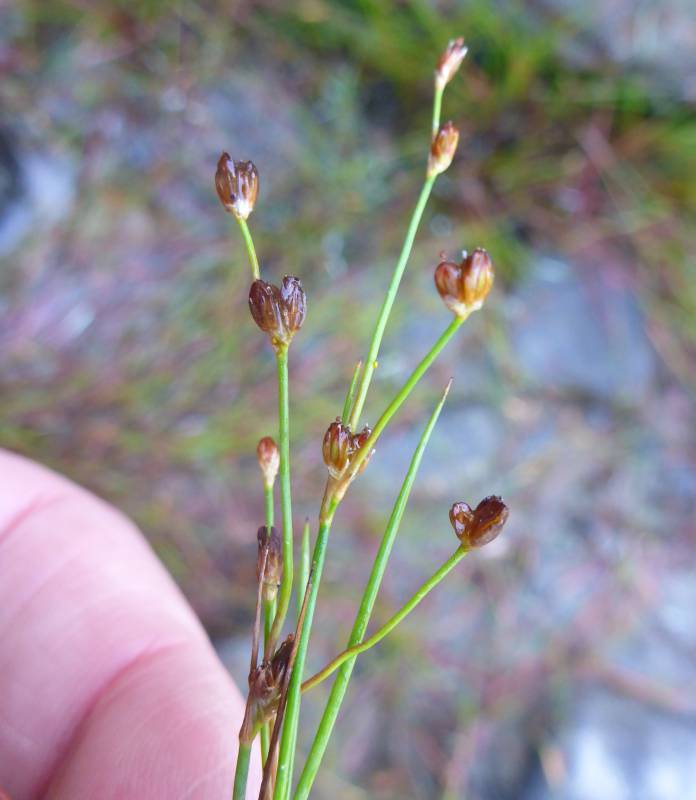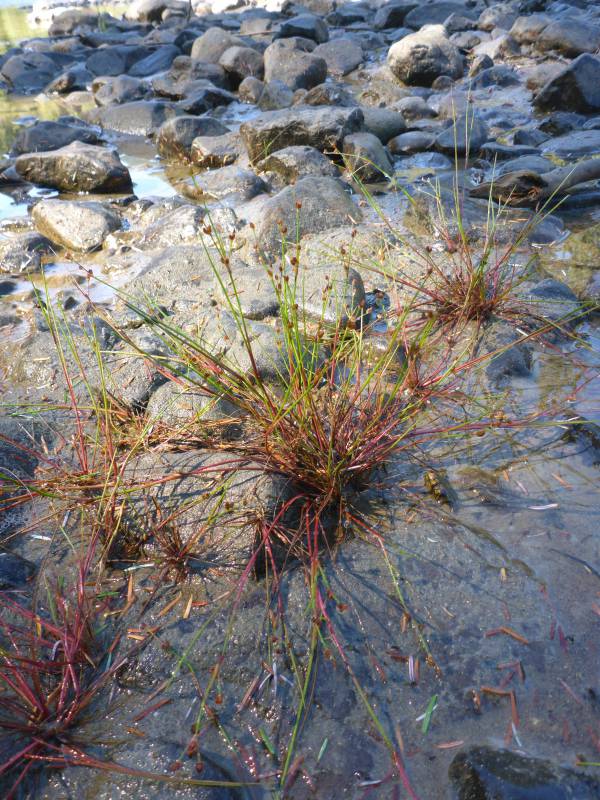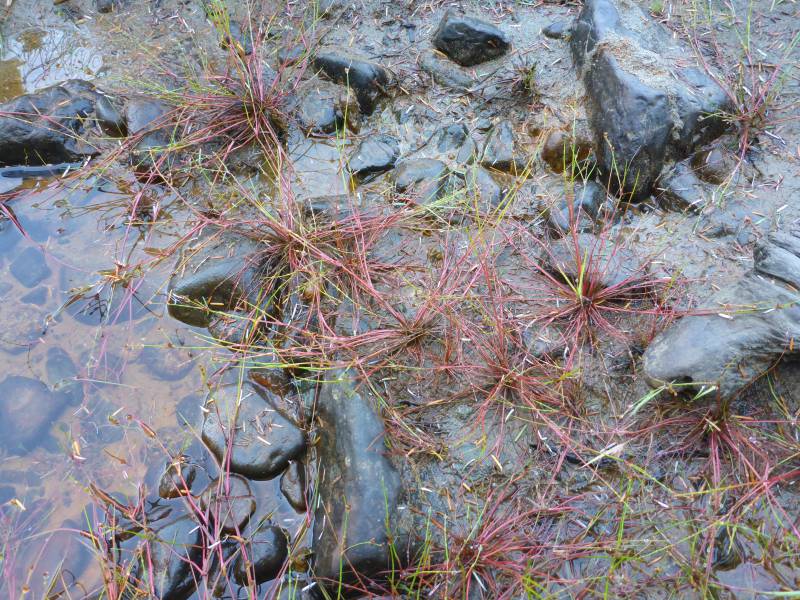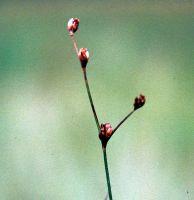Distribution: Occurring west of the Cascades crest in Washington; British Columbia to Oregon, east across northern Canada to the Atlantic Coast.
Habitat: Sandy or peaty shores of streams, and pools.
Flowers: July-September
Origin: Introduced from Eurasia
Growth Duration: Perennial
Conservation Status: Not of concern
Pollination: Wind
Tufted perennial, often with basal bulb-like swellings, the stems 0.3-3 dm. tall, often up to 10 dm. when floating or submersed; the stems erect to decumbent and rooting at the nodes, or floating, terete and smooth.
Leaves 1-2, the blades terete, lax, 2-10 cm. long and 0.8-1.4 mm. broad; leaf bases sheathing, forming auricles 0.4-1 mm. long, acute and scarious.
Inflorescence of terminal racemes of 1-8 heads, 2-10 cm. long, erect, the heads 2- to 6-flowered, obconic; flowers often forming bulbils; perianth 2-3.6 long, the 6 segments subequal, pale brown, ovate to lanceolate; stamens 3 or 6,
Capsule cylindric, 2.5-4 mm. long, chestnut brown, the apex obtuse.
Publication: Sp. Pl. 1: 327. 1753.
Juncus supinus Moench [HC]
PNW Herbaria: Specimen records of Juncus bulbosus in the Consortium of Pacific Northwest Herbaria database.
WA Flora Checklist: Juncus bulbosus checklist entry.
OregonFlora: Juncus bulbosus information.
E-Flora BC: Juncus bulbosus atlas page.
CalPhotos: Juncus bulbosus photos.
USDA Plants: Juncus bulbosus information.








